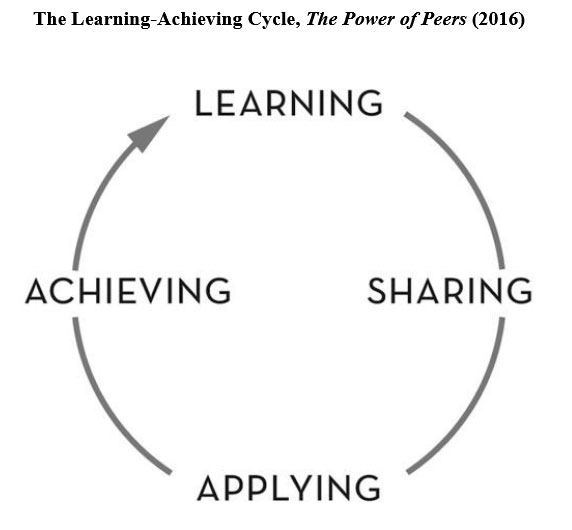Note to CEOS for 2021: Make Learning Cool Again

During a recent conversation with executive coach Jen Thornton on our Peernovation podcast, we talked about learning and what it might mean to organizations and teams of all shapes and sizes if we could make learning cool again. I use the word “again” because one of the scholars who did such an extraordinary job of making learning cool for organizations the first time was Peter Senge, author of The Fifth Discipline (1990). Now, more than 30 years later, it appears timely to consider relearning how important learning in organizations can be to their survival and sustainability.
A Reminder from Peter Senge
I was inspired to dive back into the original text to offer more details about what Senge espoused and stand on the shoulders of his words to provide some thoughts for 2021:
“As the world becomes more interconnected and business becomes more complex and dynamic, work must become more ‘learningful.’ It is no longer sufficient to have one person learning for the organization, a Ford or a Sloan or a Watson. It’s just not possible any longer to ‘figure it out’ from the top, and have everyone else following the orders of the ‘grand strategist.’ The organizations that will truly excel in the future will be the organizations that discover how to tap people’s commitment and capacity to learn at all levels in an organization.
“Learning organizations are possible because, deep down, we are all learners. No one has to teach an infant to learn. In fact, no one has to teach infants anything. They are intrinsically inquisitive, masterful learners who learn to walk, speak, and pretty much run their households all on their own. Learning organizations are possible because not only is it our nature to learn but we love to learn. Most of us at one time or another have been part of a great ‘team,’ a group of people who functioned together in an extraordinary way— who trusted one another, who complemented each others’ strengths and compensated for each others’ limitations, who had common goals that were larger than individual goals, and who produced extraordinary results. I have met many people who have experienced this sort of profound teamwork—in sports, or in the performing arts, or in business. Many say that they have spent much of their life looking for that experience again. What they experienced was a learning organization. The team that became great didn’t start off great—it learned how to produce extraordinary results.”
Two Aha Concepts
Senge points out that it’s not only our nature to learn, but that we love to learn. How many articles have you read that feature the concept that employees are more productive when doing what they love to do? It’s these employees who are fully engaged, more productive, and less likely to leave your organization to work for your competitor. Not to mention, it’s the employees who are learning and growing that I presume you’d like to keep. Second, great teams become great when they are commit to learning first. This statement calls attention to a significant point in Peernovation: What Peer Advisory Groups Can Teach Us About Building High-Performing Teams (2020). Take a look at any outstanding team in business or sports – the ones who consistently rank at the top of their industry or always competing to win championships. These organizations do not see being number 1 or becoming a world champion as the goal. Instead, they consider it the reward for a relentless commitment to learning and getting better every day. Senge, the great teams he talks about, and the teams you’ve watched or been part of during your lifetime underscore the power of The Learning-Achieving Cycle and what it takes to realize organizational excellence.
Not only do we love to learn, but we learn better when we learn together. By sharing experiences and concepts, we learn more deeply. We also give one another the encouragement and the courage to apply what we learn. Achieving positive results from using what we learn, even when it involves trial and error, creates the desire to learn more, which eventually produces a reinforcing loop. When The Learning-Achieving Cycle is activated, learning and growing doesn’t just become what you do in your organization; it defines who you are.
Relearning Learning
Faced with myriad challenges in the months and years ahead, today’s organizations need to be more adaptive than ever before. Becoming more adaptive won’t happen by accident. It will emerge from your commitment to stimulate a culture of learning and to be the first one to lead the way. Show your team that learning and growing applies to everyone and that if you do it together, realizing you’ll all stumble from time to time along the way, you’ll become an unstoppable force in the universe. If you succeed in making learning cool again at your organization, everybody wins.
Bring the best of the CEOWORLD magazine's global journalism to audiences in the United States and around the world. - Add CEOWORLD magazine to your Google News feed.
Follow CEOWORLD magazine headlines on: Google News, LinkedIn, Twitter, and Facebook.
Copyright 2025 The CEOWORLD magazine. All rights reserved. This material (and any extract from it) must not be copied, redistributed or placed on any website, without CEOWORLD magazine' prior written consent. For media queries, please contact: info@ceoworld.biz









